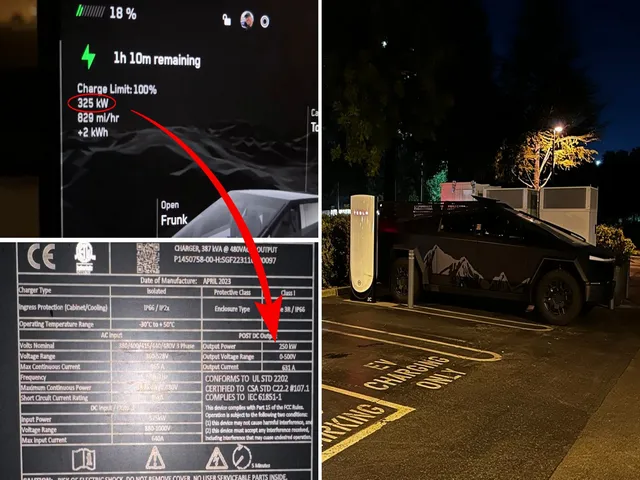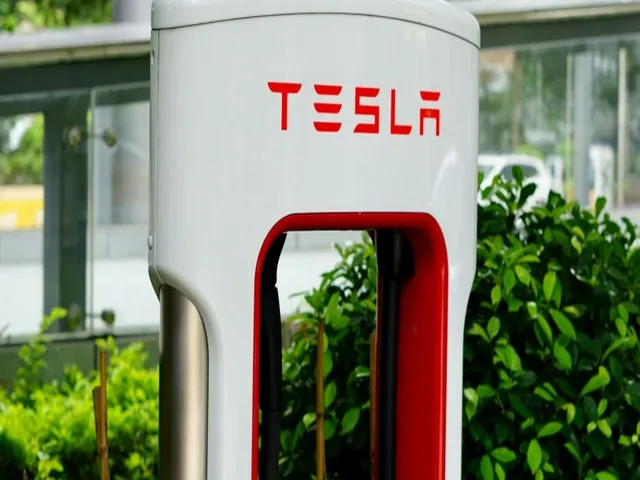Tesla continues to push boundaries in electric vehicle charging speeds. Through consistent improvements to its Supercharger network, the company aims to address range anxiety and maximize driver convenience. Recent recordings from owners have pointed to tests of higher power capabilities than currently available – exceeding even the 250kW V3 maximum.
This article explores the technical journey enabling this leap, implications for vehicles and infrastructure, and what it may mean for the future of fast charging. By analyzing developments and statements from Tesla representatives, we shed light on promising advancements that bring new frontiers in refueling times closer to reality.

Superchargers labeled V3+ reference stations retaining V3 generation cabinets combined with V4 charge posts rolled out from late 2022 onwards. Offering higher current capability than predecessors, V4 posts theoretically enable increased outputs. However, cabinets have restricted this potential. Now some locations are testing beyond these limits, with one delivering over 320kW sustained for a minute.
Lead engineer Wes Morrill confirmed selective assessment of “a few” qualified stations. This suggests technical vetting before broad release, with modifications to hardware or software allowing cabinet outputs exceeding their original 250kW rating by 20% or more. Time will tell if higher ratings become the norm, extending charging performance.
The Cybertruck is still in development, but it shows significant promise to take advantage of higher charging capacities. With its 200kWh battery expected to split into two packs, it could charge both at rates over 300kW. This would allow it to replenish over 80% of its battery in under 30 minutes.
Additionally, estimates suggest the Cybertruck battery will support close to 800V, meaning charging speeds could rise further once Superchargers upgrade their voltage output. With plentiful torque available across its full range, high-speed charging would benefit the Cybertruck tremendously. It remains one of the most anticipated new vehicles for its novel design and capabilities.
The dual-pack charging design points to an advanced thermal management system to withstand significant power input without overheating. If implemented effectively on future models, it could substantially improve the recharging experience across Tesla’s lineup and give it an edge over competitors for many buyers. However, real-world testing will still be required to confirm expected performance gains as output levels continue increasing.
As battery and power electronics improve, there’s significant potential to boost current vehicle charging rates above 250kW. This trial showcasing over 320kW suggests Tesla is thoroughly exploring how to expand its network functionality. Alongside Cybertruck’s 800V system, the Model S Plaid and Model Y Long Range already utilize such higher voltages.

Over the next five years, adopting widespread 800V architecture and two-pack loading seems achievable across many models. That could translate into shaving hours off long distance travel times. More efficient thermal management would also help maximize current and voltage inputs. Techniques like immersing cells or loops filled with phase-change liquids show promise.
But simple measures like enhanced cabling and contact cooling may suffice initially. Given Musk’s enthusiasm for pushing limits, 350kW or beyond could become common throughout the lineup by 2027 barring unexpected obstacles. This would assert Tesla’s supremacy for fastest refueling before competitors’ offerings can catch up.
Additional advancements in Supercharger technology form a key part of Tesla’s long term planning. Transitioning V3 cabinets to handle higher voltages would unleash current stall capabilities. But extra power will also require upgrading transformer components at stations. Tesla recognized years ago that supporting rates near 1MW would future-proof sites through this decade.
Their strategy now relies on constant innovation to maintain fast recharge speeds allowing longer range EVs. As the network expands to millions of charges daily, advanced management systems balancing local and regional loads will grow critical. Features like dynamic power allocation based on demand, vehicle mixes and available solar could help maximize throughput.

This “charger 3.0” upgrade cycle beginning now aims to providedriver-centered convenience for normal and high-usage customers alike. It also helps showcase benefits that could persuade more drivers to go electric.
Tesla’s focus on pushing boundaries with each new Supercharger generation shows strong commitment to progress. Not remaining stagnant at any current limits motivates teams tackling key challenges. These include enhancing thermal management for cells, optimizing electrical architectures and employing more efficient conversion methods.
The company also partners with other firms to explore wireless charging, long-distance power transmission and advanced battery designs extending ranges. Overall Tesla approaches fast recharging holistically – aiming for seamless networked optimization between vehicles, chargers and energy sources. If able to routinely deliver sustained speeds above 300kW within this decade, it would tighten the automaker’s lead significantly.
Slowing or abandoning this improvement cycle could risk losing some buyers and competitive advantages. But continual pushing of what’s possible seems centrally tied to Tesla’s vision and success so far. Innovation remains core to satisfying rising expectations around EVs’ refueling convenience.


